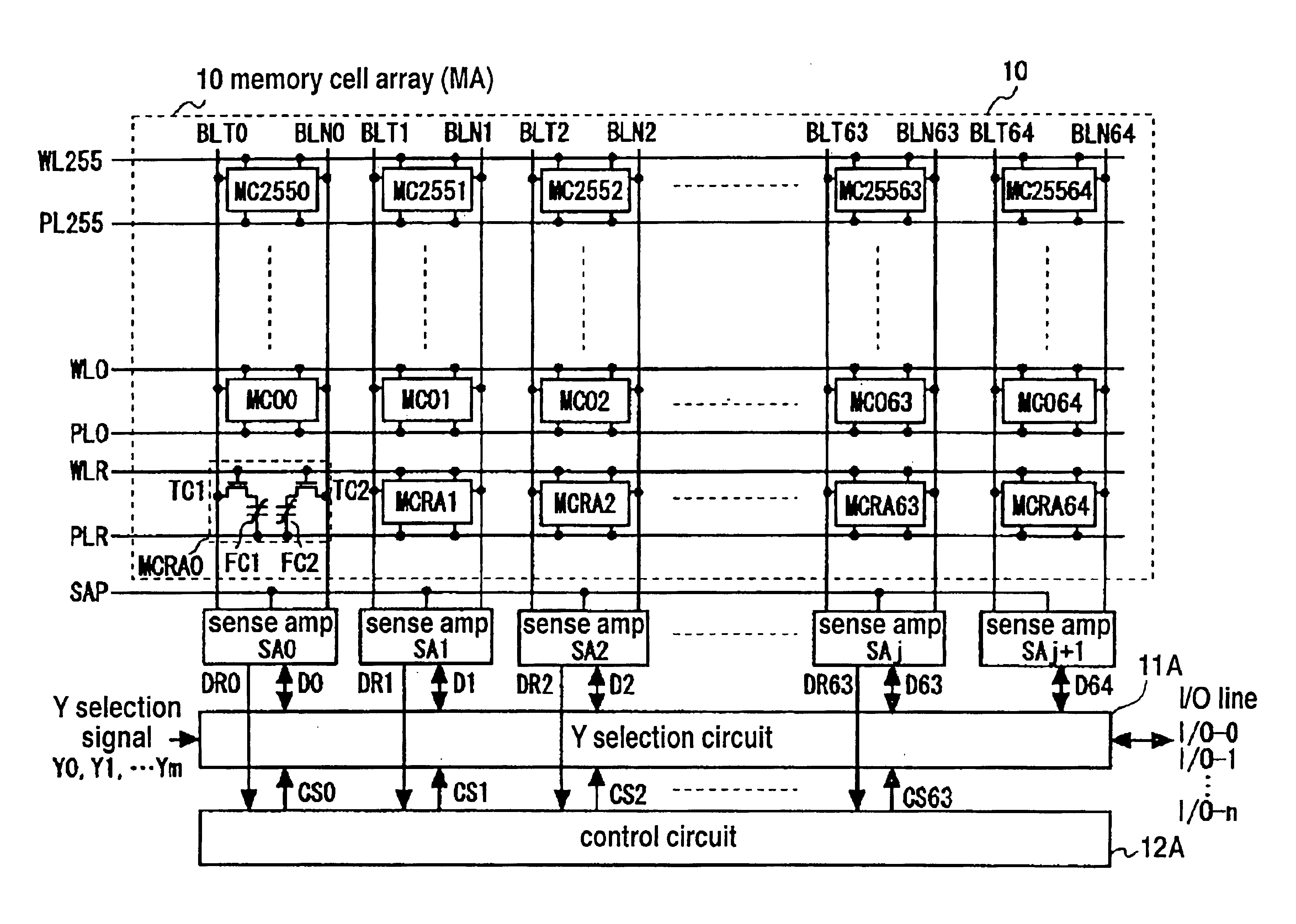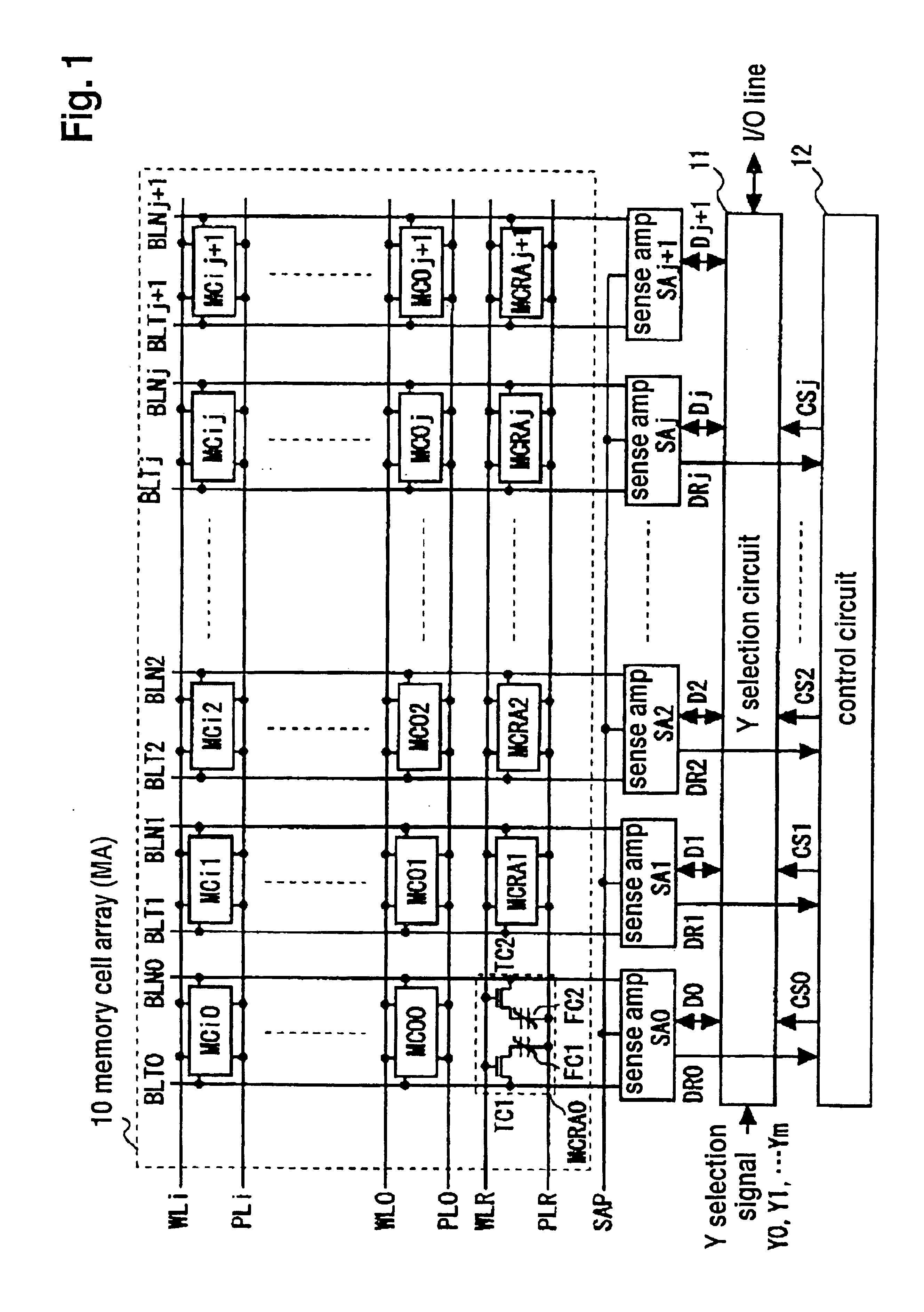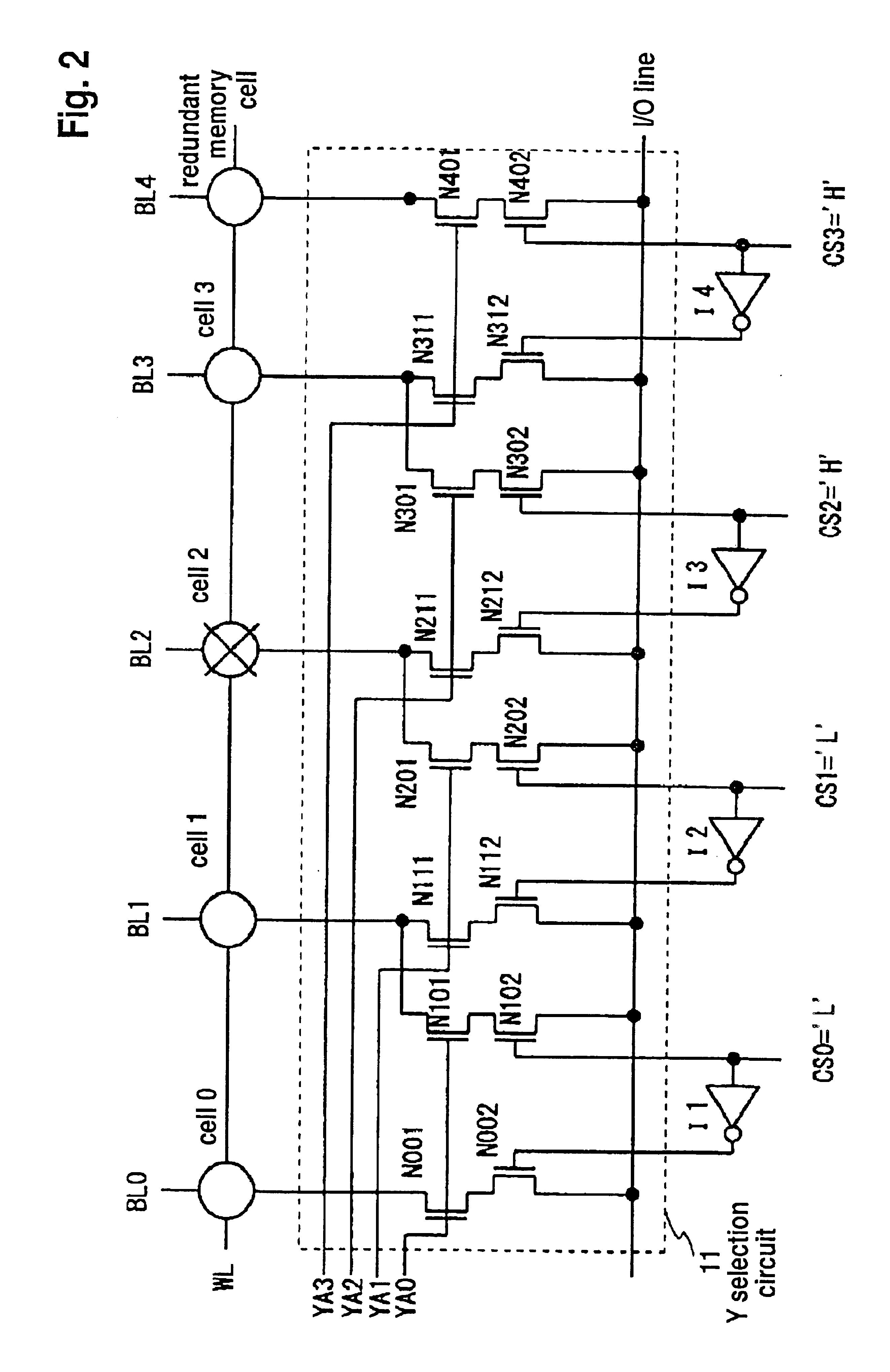Semiconductor memory having a defective memory cell relieving circuit
a technology of memory cell and relieving circuit, which is applied in the field of semiconductor memory, can solve the problems of large area of the relief circuit, long access time, and defective memory cells, and achieve the effect of avoiding deterioration of characteristics, minimizing the overhead of memory cell arrays, and no overhead
- Summary
- Abstract
- Description
- Claims
- Application Information
AI Technical Summary
Benefits of technology
Problems solved by technology
Method used
Image
Examples
third embodiment
The third embodiment is similar to the first and second embodiments in the reading of the substitution information storing memory cells and in that in a second and succeeding cycles, the main memory cells are accessed and the substitution information storing memory cells are not accessed.
The selection of the substitution information read out from the substitution information storing memory cells RMC0 to RMC63 become possible when the X address becomes established. Therefore, the decoder DEC starts to operate at the moment the word lines WLx are activated.
On the other hand, if the Y selection signal is brought to the high level “H”, the data read out from the memory cell is outputted through the I / O line to the external, or the write data supplied from the external is written into the memory cell through the I / O line, and when the Y selection signal is returned to the low level “L”, the control circuit 12A terminates the operation.
Therefore, the time after the word line is brought to...
fourth embodiment
Now, a fourth embodiment of the semiconductor memory in accordance with the present invention will be described. Referring to FIG. 11, there is shown a block diagram of the semiconductor memory in accordance with the present invention.
The shown fourth embodiment includes two sub-arrays “subarray0” and “subarray1”. The “subarray0” includes a memory cell array MA1 and a plurality of sense amplifiers SA0 to SAj+1. The memory cell array MA1 includes a number of memory cells MC00 to MCij, one column of redundant memory cells MC0j+1 to MCij+1, and one word line of substitution information storing memory cells MCR0 to MCRAj+1.
Furthermore, transfer gates TG00 and TG10 to TG0j+1 and TG1j+1 are inserted between the substitution information storing memory cells and the memory cells MC00 to MCij and the redundant memory cells MC0j+1 to MCij+1, and controlled by a signal ETG to be able to selectively separate the memory cells MC00 to MCij and the redundant memory cells MC0j+1 to MCij+1, from the...
sixth embodiment
Now, a sixth embodiment of the semiconductor memory device in accordance with the present invention will be described with reference to FIG. 8, which is a block diagram of the semiconductor memory device. In FIG. 18, elements corresponding to those shown in FIG. 5 are given the same reference numbers, and explanation will be omitted for simplification of the description.
In this sixth embodiment, a memory cell array (MA2) 10 includes a number of memory cells MC00 to MCij arranged in the form of a matrix and one column of redundant memory cells MC0j+1 to MCij+1, but does not include substitution information storing memory cells.
Each of sense amplifiers SA0 to SAj+1 is connected to a corresponding pair of bit lines of a number of bit lines pairs BLT0 and BLN0 to BLTj+1 and BLNj+1. A Y selection circuit 11A is the same as the construction shown in FIG. 6.
A control circuit 12B is constituted of “j+1” non-volatile memory cells arranged for example as shown in FIG. 19. As shown in FIG. 19,...
PUM
 Login to View More
Login to View More Abstract
Description
Claims
Application Information
 Login to View More
Login to View More - R&D
- Intellectual Property
- Life Sciences
- Materials
- Tech Scout
- Unparalleled Data Quality
- Higher Quality Content
- 60% Fewer Hallucinations
Browse by: Latest US Patents, China's latest patents, Technical Efficacy Thesaurus, Application Domain, Technology Topic, Popular Technical Reports.
© 2025 PatSnap. All rights reserved.Legal|Privacy policy|Modern Slavery Act Transparency Statement|Sitemap|About US| Contact US: help@patsnap.com



